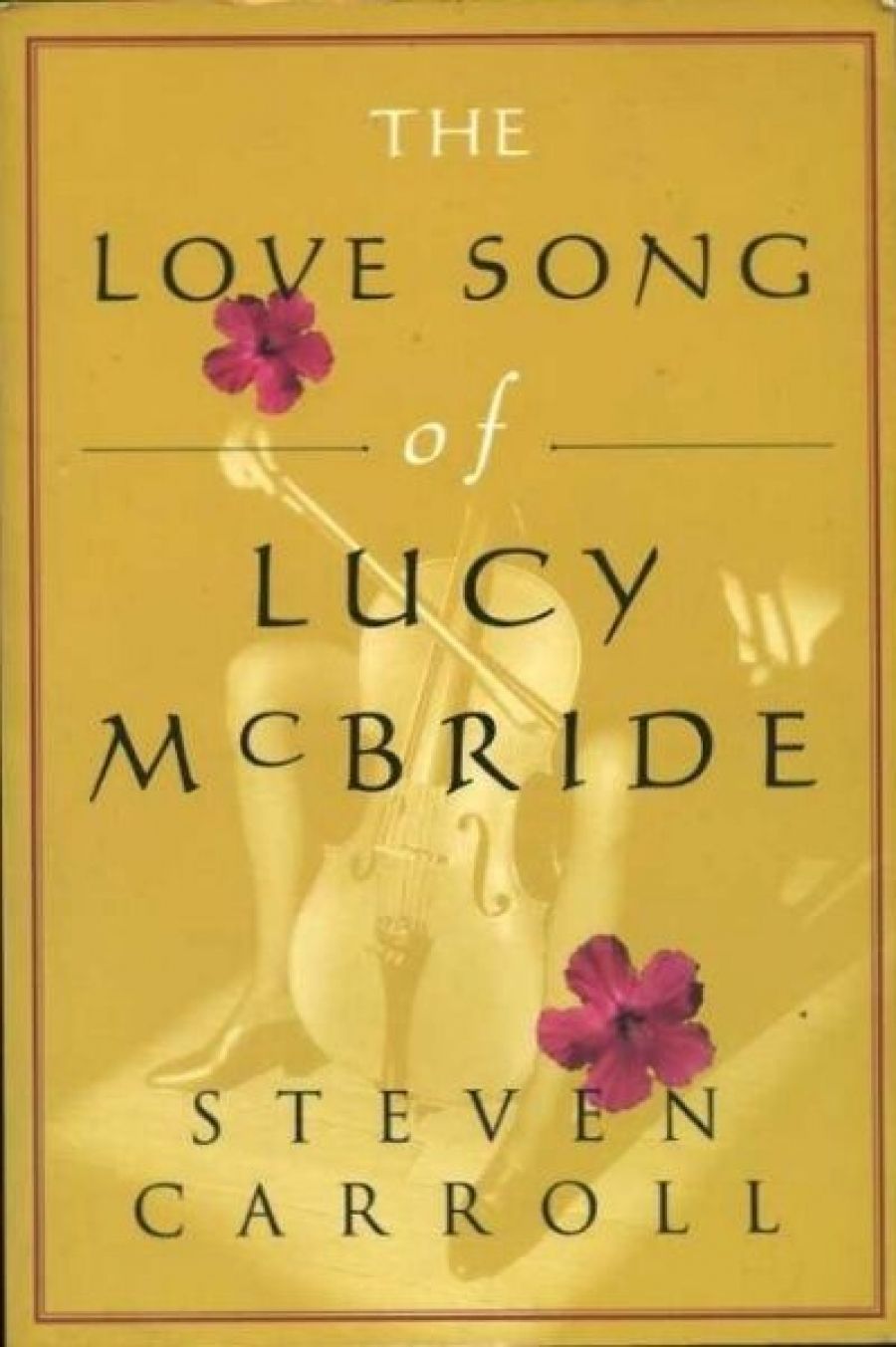
- Free Article: No
- Contents Category: Fiction
- Review Article: Yes
- Online Only: No
- Custom Highlight Text:
In his third novel, Steven Carroll continues to work on those questions, obsessions, scenes and images that preoccupy him as a writer – the characters and personalities of women, and in particular that figure of a sexually charged and sophisticated young woman so disturbing to Helen Garner in The First Stone; the language of infatuation; the placement of characters in their particular city; mismatched lovers as the centre of a love story; and a certain trick Carroll has of overlaying the inner lives of characters with the narrative of events in the story being told. It is as though his characters swim, groggily, up out of their fantasies into the harsh, ironic events that have been provoked by their inner dreams. Life in his novels operates as a merciless commentary on the evasions and hubris of each character's consciousness.
- Book 1 Title: The Love Song of Lucy McBride
- Book 1 Biblio: Allen & Unwin, $16.95 pb, 278 pp
With this third book, Carroll is growing as a novelist. Where Momoko was too modest, slight, and predictable, and Remember Me Jimmy James tackled too broad a sweep of time and too many characters, Lucy McBride manages a focused small-scale story with subtlety and a convincing depth of detail.
As a reader I am pleased to find him tackling projects more ambitiously with each succeeding novel. Carroll’s Lucy McBride is thirteen at the beginning of the novel and twenty-two by the end, when her life is really just beginning. The novel traces the path of her erotic and musical education. She falls in love with the cello after hearing Bach played by a maestro, Fortuny. Once she finds Fortuny’s photo (taken by Man Ray) on an album sleeve she falls in love with him too. Lucy reproduces Fortuny’s recorded performances in her own playing, but with a distinctively young and Australian touch: she learns to play the cello like a farmer with a shovel, and she deliberately sits to play like a tradesman at his bench. Her mother says she walks like a slut. By the time Lucy meets Fortuny in Venice, he is seventy years old, suffering from arthritis, and worried that his life might not have been the enduring artistic success he had worked so hard to achieve. And he was, it seemed to him, impotent, after spending forty years of his professional life as if he was a young bachelor.
At the centre of the story is the relationship between Lucy and Fortuny. Teacher and pupil, maestro and novice, hero and worshipper, sharers in the esoteric knowledge of the tricks that can produce stunning musical performances, and finally, perhaps, lovers. The novel worries at the question of what raises technique and performance to art. Fortuny wants light and shade from Lucy and Lucy wants practical knowledge from her hero. The novel itself plays with moments of light and shade, and with the shifting of power that this implies. At its centre is the scene of the old man disrobing in front of the naked young woman. She tells him to leave the lights on in the bedroom:
With his singlet removed she saw the almost rural stockiness of Fortuny’s body with its curled and twisted grey hairs, the stoutness of his neck, the solidity of his forearms and the strength in the shoulders and arms that had come from a lifetime performance … But as he lowered his cream cotton trousers she nearly laughed. For there, hanging below the border of his silk, blue underpants, was Fortuny’s left testicle. Ponderous, pendulous, white, hairless, and as round and smooth as a pebble in a stream. And it was at that point she also saw the sagging muscle of his chest, the paunch of his stomach, the layers of skin folded like pastry, the thinness of his legs, and all the time, while he placed his summer trousers on the chair, one smooth, white testicle.
From this sight of the ancient testicle the novel races to its climax with an unexpected focus on Fortuny, not Lucy. Ending in the sodden streets of Venice it recalls Death in Venice, joining its meditation on the foolishness of love and hope in the old age.
The Love Song of Lucy McBride has remarkable affinities to Andrea Goldsmith’s Facing the Music (1994). Both books write lovingly of the cello, both take much of their inspiration from European culture, both are preoccupied with the father figure of the maestro who might or might not have been a fraud, and both place their maestro against the figure of a gifted young woman. Both writers construct their sentences with the ear and the mind, sensually and musically. And both these books point us back to Christina Stead and Henry Handel Richardson in a line of Australian novelists who have aimed to bring the light and shade of classical music into the prose of their novels.


Comments powered by CComment